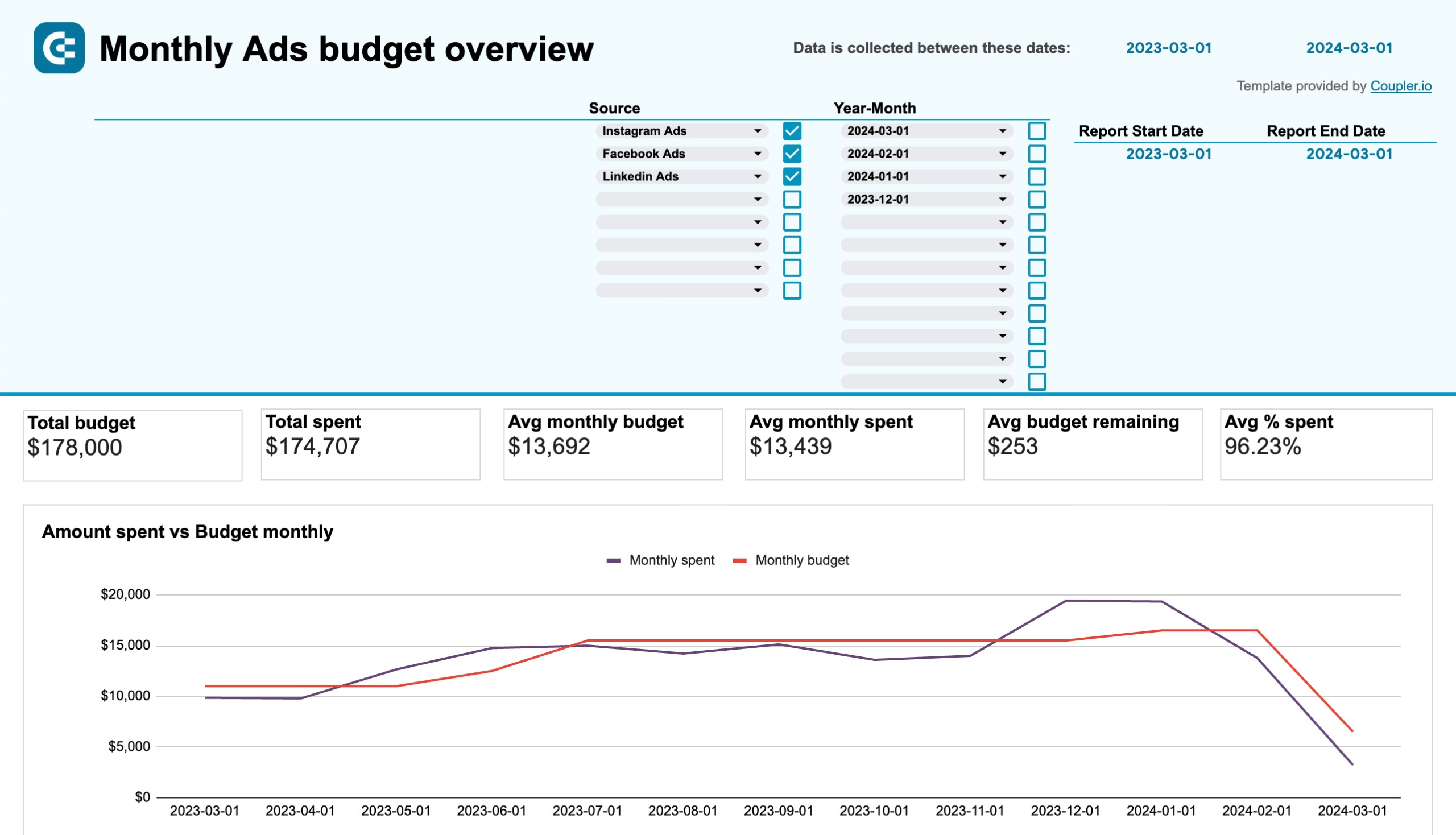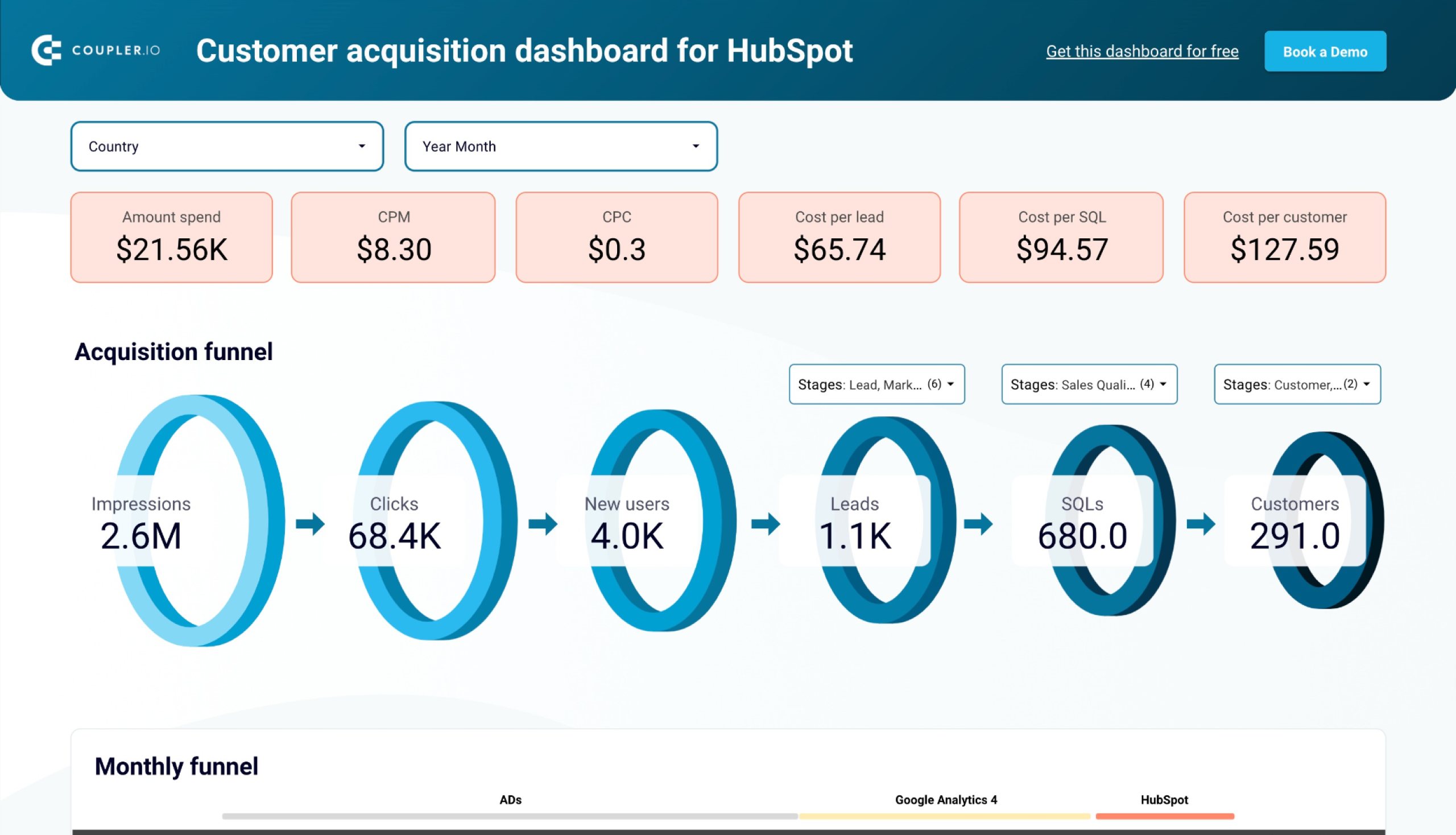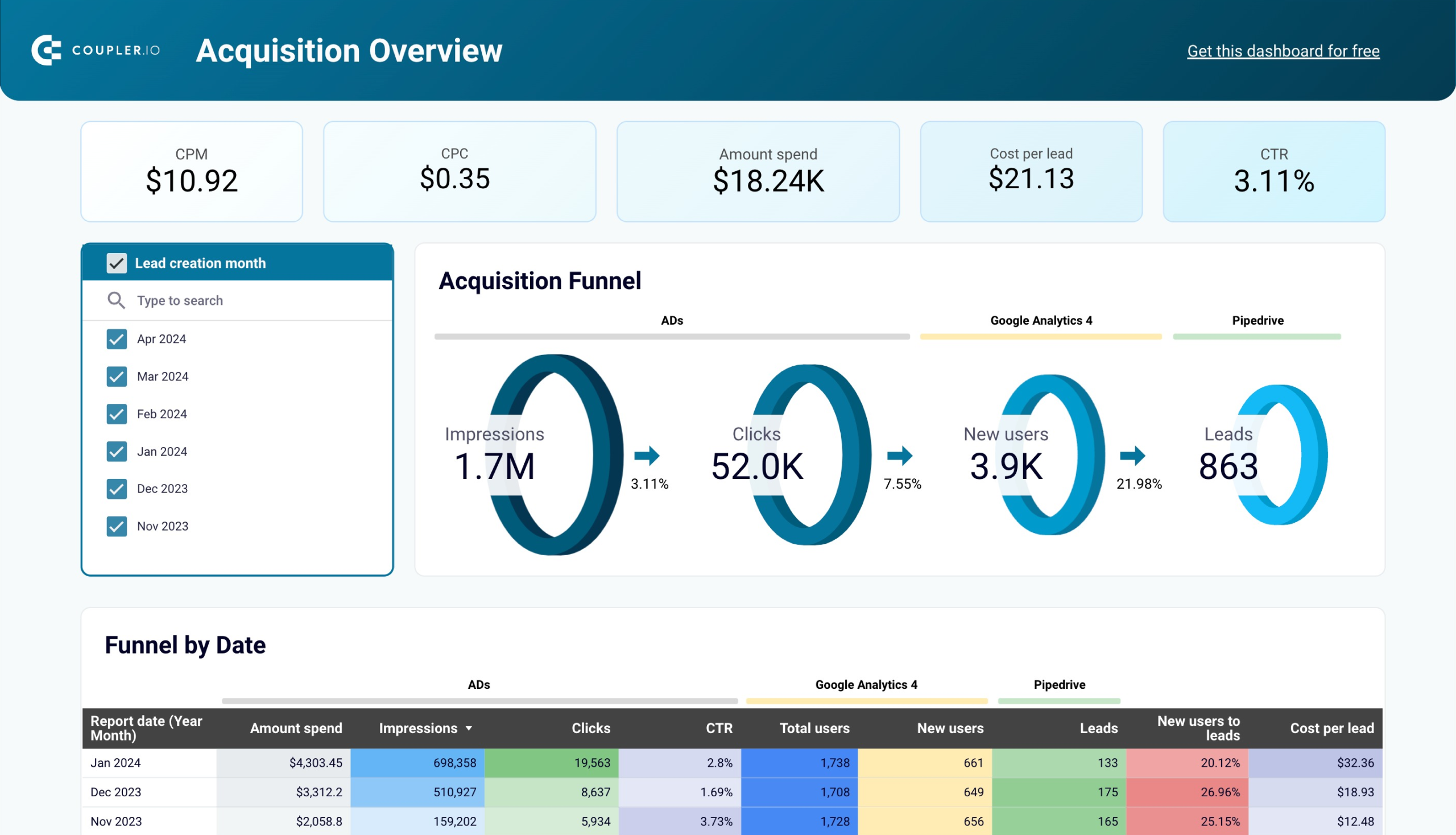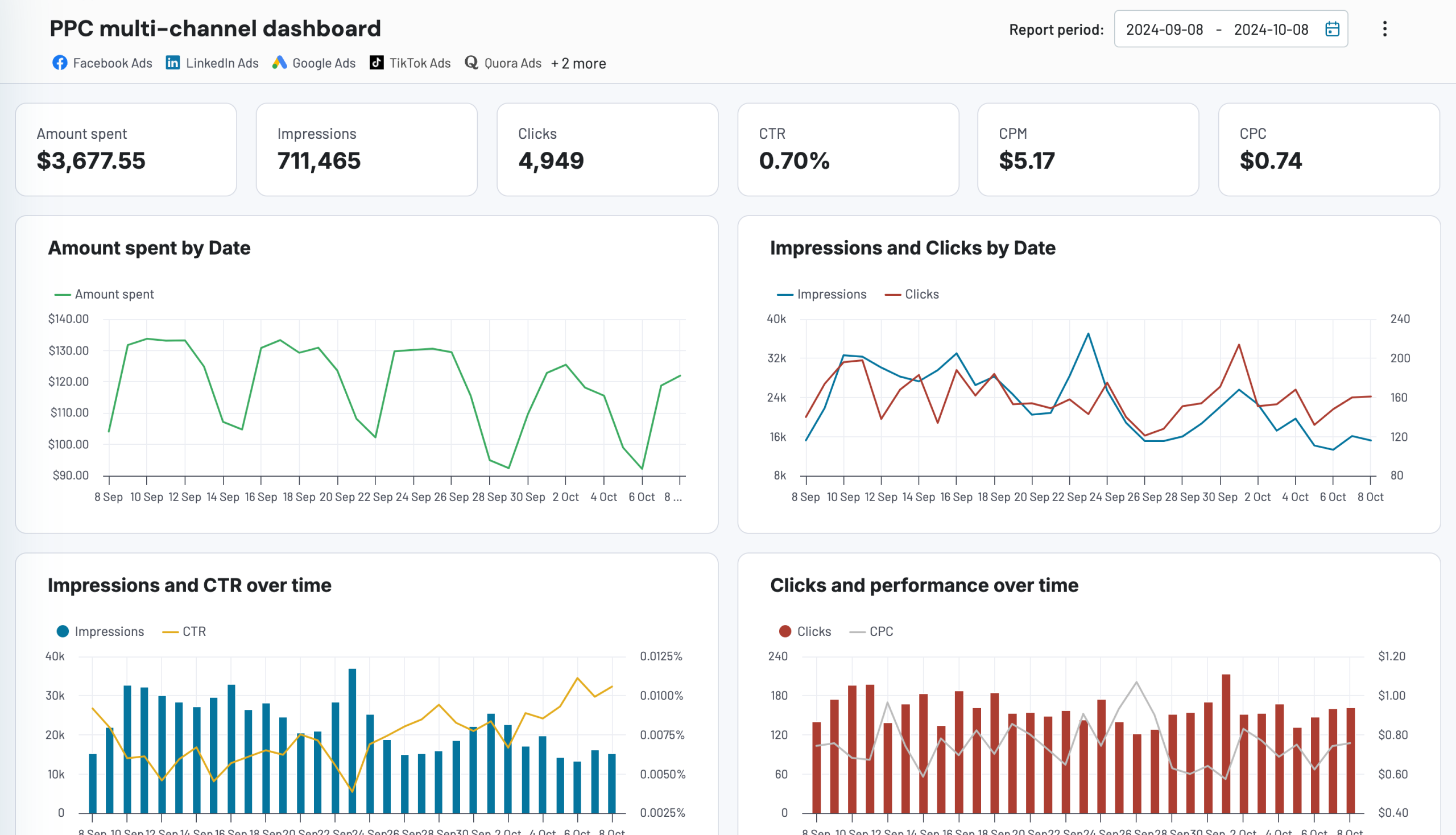The only constant in marketing? Change—and 2025 is shaping up to be nothing short of transformative. This year promises to shake up the digital landscape, blending excitement with uncertainty. AI is no longer just a buzzword; it has become a game-changer, freeing us from tedious tasks while reshaping how we connect with audiences. Video content? It’s dominating feeds like never before.
Let’s dive into the trends that are redefining marketing in 2025 and discover how to stay ahead of the curve.
The most important trends in digital marketing
The marketing industry is constantly changing, which allows even smaller brands to gain traction and engage with customers. It’s no longer just about a big budget; it’s more about learning how to adapt to new technologies and implement the most innovative tools.
In 2025, video continues to grow, as the younger generation is looking for snackable, easy-to-consume content. As you might expect, artificial intelligence will take center stage and help brands work on hyper-personalization. Also, this year is all about commercial, shoppable content across all platforms. Customers are wasting no time and want to be able to make a purchase in a matter of seconds, without even switching platforms.
Next, we’ll dive deeper into each trend that will shape the marketing world in 2025
Marketing must become data-driven
According to McKinsey, organizations that leverage data-driven marketing strategies are 23 times more likely to acquire customers and 6 times more likely to retain them. As marketing channels multiply and consumer behaviors evolve rapidly, brands must embrace a thoroughly data-driven approach to remain competitive in 2025.
Cross-channel data analysis
Marketing teams must now analyze performance across all channels simultaneously to understand the complete customer journey. With customers typically having 6-8 touchpoints before conversion, siloed data creates dangerous blind spots in strategy development.
Evaluating AI traffic impact
As AI search engines gain significant market share, marketers must now separately analyze traffic and conversions from these AI-powered search platforms. It’s also important to understand the distinction between AI search engines and chatbots since they have different effects on search behavior:
- AI search engines like Perplexity and You.com function similarly to traditional search engines but leverage AI to deliver more personalized, conversational results. They typically provide direct answers to queries and links to sources, changing how users discover content.
- AI chatbots like ChatGPT and Claude operate as conversational interfaces – users ask questions and receive responses generated by the AI itself rather than being directed to external websites.
AI-driven traffic often shows better conversion rates than traditional organic traffic, representing a powerful acquisition channel that requires dedicated tracking and optimization.
Marketers need to develop specific strategies for each of these AI platforms, as content visibility and traffic acquisition work differently on each. Coupler.io enables marketing teams to track and analyze AI traffic sources alongside traditional channels to understand their true impact on conversion rates and customer acquisition costs. For instance, here is a free dashboard by Coupler.io to track the performance of AI traffic to your website.
AI traffic performance dashboard
 Preview dashboard
Preview dashboard
AI traffic performance dashboard
Preview dashboardMore testing, better decisions
Data-driven marketing demands continuous experimentation. Leading brands are now conducting A/B tests across all marketing activities, from ad copy to landing pages to email sequences. They measure results and optimize efforts based on user behavior rather than assumptions.
First-party data utilization
With the phasing out of third-party cookies, first-party data has become marketing gold. Brands must now develop systems to collect, analyze, and activate data directly from their owned channels and CRM systems to maintain personalization capabilities.
Functional conversion funnels
Modern marketing requires comprehensive funnel visibility from the first touch to conversion. By connecting data from CRM, advertising platforms, and analytics tools like GA4, marketers can pinpoint exactly where potential customers drop off and optimize accordingly.

Implementing truly data-driven marketing in 2025 requires solving several interconnected challenges: breaking down data silos across multiple channels, analyzing AI-driven traffic effectively, and more.
To overcome these challenges, Coupler.io enables marketers to consolidate data from advertising platforms, analytics tools, CRMs, and custom sources into unified dashboards with pre-built marketing templates. This solution saves valuable time and transforms how marketing teams measure campaign effectiveness and drive customer acquisition and retention advantages.
Artificial Intelligence trends
We couldn’t start with any other topic since artificial intelligence is the biggest trend in IT now. It continues to evolve and there are an estimated 57,933 AI companies operating worldwide with over 378.80 million users.
AI agents
No, these are not secret agents, just software programs that can interact with their environments, collect data, and use that data to perform tasks. In 2025, there will be more of these agents with even more capabilities. You can incorporate this trend into your marketing strategy in various ways.
For example, you can use agentic artificial intelligence to monitor e-commerce sales and customer behavior in real-time across Shopify and Stripe. The technology generates a performance dashboard highlighting top-selling products, abandoned carts, and conversion rates. It then sends an automated report to the sales and marketing teams.
Democratization of AI
This industry is witnessing a shift toward more accessible and cost-effective models in 2025. As competition intensifies between established providers and newer entrants, we’re seeing more affordable options entering the market. As a result, marketers are highly concerned with the question, “Will AI take my job?”
This increased accessibility means even smaller businesses can now leverage sophisticated AI tools that were previously only available to enterprises with substantial budgets.
Hyper-personalization powered by AI
80% of consumers are more likely to purchase from brands that offer personalized experiences. While personalization has been a buzzword for the last few years, these tools can actually help brands hyper-personalize the experiences of their users.
Their algorithms can modify website content, product recommendations, and user interfaces in real-time based on user behavior. For example, an e-commerce site can showcase products that align with a user’s past purchases or search history.
While it might be the new and shiny technology at the moment, it’s crucial for brands to use it effectively to avoid AI fatigue.
Around 50% of consumers can identify AI-generated content and over 52% disengage after suspecting AI involvement. Alternate the AI-powered experience with the human touch to connect with your customers.
Paid ads trends
Digital advertising continues to be a pivotal component of marketing strategies in 2025, with significant growth and evolving trends shaping the industry.
AI-powered automated bidding strategies
Almost 80% of marketers are utilizing artificial intelligence to enhance advertising effectiveness. In addition to helping you improve targeting, this technology can also be used for automated bidding strategies. For better results, brands can start with manual bidding and allow AI-driven algorithms to learn from historical data. Then, moving to an automated bidding strategy can help reduce cost-per-acquisition and increase return on ad spend.
Pro tip: To keep your automated bidding strategies under budget while maximizing performance, use Coupler.io’s PPC Monthly Budget Dashboard. This solution integrates all your advertising platforms into a single view, so you won’t have to move from one tab to another while calculating the remaining budget. The dashboard automatically updates with fresh data at your preferred intervals, and you can set up custom alerts to prevent overspending before it happens.
Growth of native advertising
Native advertising is experiencing significant growth, with projections indicating a substantial increase in market size and adoption in 2025. The global native advertising market is expected to reach approximately $400 billion this year, representing a 372% increase from 2020.
The main reason for the focus on native ads? Increased engagement. Native advertising generates 53% more engagement than traditional banner ads, indicating higher effectiveness in capturing audience attention.
Shoppable ads
This year, customers are expecting a seamless shopping experience, no matter the platform. Social media is shifting from informational to commercial content and consumers are embracing this change. Over 50% of global consumers express intentions to increase their shopping activities through social platforms.
We’ve separately blogged about PPC trends, so check it out.
Search engine marketing trends
AI search engines are getting more traction
The search engine landscape is undergoing a significant transformation in 2025, driven by the rise of AI-powered platforms. While traditional search engines like Google maintain a dominant position, artificial intelligence search engines are steadily increasing their market share.
Last year, around 8% of US respondents mentioned that they are now using ChatGPT as their primary search engine. Also, Google’s share declined from 80% to 74%.
AI-powered search engines are altering traditional search result dynamics by presenting alternative SERPs that feature less prominent websites. This approach diversifies the sources of information available to users. For content creators, it’s an opportunity to increase their visibility by focusing on niche topics.
This trend impacts how content is ranked on traditional search engines like Google. Also, link-building efforts are evolving to resemble traditional public relations efforts. The focus will be on earning backlinks from reputable and authoritative sources rather than mass-producing links.
Importantly, AI search traffic is growing steadily and typically shows better conversion rates than traditional organic traffic in most cases. This makes it a powerful acquisition channel marketers should actively monitor and optimize for.
AI-generated content and its impact on SEO
In 2025, more businesses plan on integrating AI-generated content into their strategy. Around 65% of businesses report improved SEO results through the use of these tools.
However, the surge of AI-generated content has led to challenges in maintaining content authenticity and quality. Search engines are refining their algorithms to detect and prioritize original, high-quality content.
Learn more about AI impact on SEO.
Google’s zero-click search
Last year, around 58.5% of Google searches in the U.S. and 59.7% in the EU resulted in zero clicks. This trend will continue to grow in 2025. The shift means businesses need to adapt their SEO strategies and focus on capturing visibility within search features like featured snippets, knowledge panels, and “People Also Ask” sections to maintain their online presence.
From informational to commercial search
As zero-click searches rise, informational content is experiencing a decline in click-through rates. Users increasingly find answers directly on search engine results pages, reducing the need to visit external sites for information. This trend shows the importance of content creators optimizing for search features that display concise, direct answers to user queries.
Content marketing trends
Growth of interactive content
This year, you are going to see more interactive content than before. Why? Because it is far more engaging. Interactive content generates approximately 52.6% more engagement than static content. Also, users spend about 13 minutes interacting with dynamic content, compared to 8.5 minutes on static content.
Interactive content could be the thing that makes your brand stand out from the crowd. 88% of marketers believe interactive content helps differentiate their brand from competitors.
Customers are looking for unique experiences and interactive content can provide that.
Focus on thought leadership content and niche expertise
Besides interactive content, 52% of B2B marketers plan to increase their investment in thought leadership content in 2025. Leadership content and niche expertise can increase customer trust and brand loyalty. 63% of buyers stated that thought leadership provides proof that an organization genuinely understands or can solve their specific business challenges.
User-generated content and employee-generated content
While AI can be used to provide informational and educational content, in 2025, customers want more social proof. How can brands align with their customers’ needs? By integrating USG and EGC into their content strategy.
93% of marketers mentioned that consumers trust content created by customers more than brand-generated content. Also, around 79% of people report that UGC significantly impacts their buying choices.
Moving on to EGC, this type of content brings more authenticity and can increase brand reach. Reports show that employee advocacy programs encouraging EGC can lead to a 192% increase in organic impressions and a 305% rise in organic engagements.
B2B marketing trends
Account-based marketing and first-party data
In 2025, the deprecation of third-party cookies has fully transformed B2B marketing approaches. Account-based marketing (ABM) has become essential, requiring marketers to sync data from CRM systems, advertising platforms, and analytics tools like GA4 to gain a comprehensive understanding of the customer journey.
First-party data has become the cornerstone of successful B2B marketing strategies. Companies must now enhance their analytics and reporting systems to collect, organize, and activate data directly from their owned channels. This shift has made tools like Coupler.io essential for visualizing customer journeys across multiple touchpoints and accurately attributing conversions. It enables marketers to create custom sales and marketing funnel analytics reports and provides a library of predesigned dashboard templates like this one for customer acquisition analysis.
The dashboard is designed as a Looker Studio template and is available for HubSpot and Pipedrive data. Naturally, the template has a built-in Coupler.io connector that seamlessly imports and refreshes data from your CRM app account.
LinkedIn and B2B influencer marketing
LinkedIn continues to be the best platform for B2B marketing. Over 94% of B2B marketers utilize LinkedIn for content distribution, surpassing other platforms like Twitter (89%) and Facebook (77%).
However, now brands have shifted their strategy. Instead of sharing posts on their company page, they are collaborating with influencers and industry experts. This strategy helps B2B brands increase their exposure and brand trust.
Demand for data-driven content and case studies
Case studies have become vital for marketers, with 75% utilizing them when researching tools, technologies, or services. Potential customers want to see how a certain tool can solve their issues. Also, they want content that is backed by data.
Growing importance of webinars, podcasts, and thought leadership
Video and audio content is also on the rise, especially in B2B marketing. Over 95% of businesses consider webinars an essential part of their marketing strategy. Additionally, most marketers believe this type of content generates the highest quality leads.
The number of podcast listeners worldwide reached 546.7 million in 2024. B2B brands can leverage podcasts to attract potential customers in 2025. Also, both podcast and webinar content can be repurposed on social media. While partnering with a podcast production agency can help companies create high-quality, engaging content more easily and quickly.
Influencer marketing trends
Rise of micro and nano influencers
Consumers are tired of influencers with a huge number of followers because they tend to collaborate with far too many brands and don’t seem to be genuine. Also, some of them are too promotional. For a more authentic experience, users are turning to micro and nano influencers. Nano influencers boast an average engagement rate of 2.53%, surpassing that of larger influencers.
Since consumers are engaging more with nano and micro-influencers, around 60% of brands have started collaborating primarily with them.
Focus on long-term collaboration and brand ambassadors
Another significant trend in influencer marketing is long-term collaboration. Instead of collaborating with multiple influencers on a large campaign that is project-based, various brands choose to select brand ambassadors for a long-term collaboration.
Brands engaging in long-term partnerships with influencers report higher returns on investment. These relationships allow for cohesive storytelling and stronger audience trust.
Video marketing trends
Growth of short-form videos
Long product videos are a thing of the past. In 2025, users, especially the younger generations like Millennials and Gen Z, are looking for short, easy-to-consume content. 73% of consumers prefer short-form videos when seeking information about products or services.
Additionally, these short-form videos generate 2.5 times more engagement than their longer counterparts. This is why more and more brands are leveraging platforms like TikTok, Instagram, and Facebook Reels to engage with customers.
Expansion of live streaming and interactive video content
Live streaming creates a sense of FOMO and higher engagement. Consumers love to interact directly with brands or influencers on Twitch live streaming. Reports show that 1 in 4 users enjoy watching a live stream on a weekly basis.
While Twitch was initially popular for streaming video games, more influencers are now using the platform to chat and showcase products. The live-streaming market is projected to reach a valuation of $345.13 billion by 2030.
The integration of interactive elements, such as polls, Q&A sessions, and clickable links within live streams, has enriched the user experience, leading to higher engagement rates.
Email marketing trends
Automated email sequences
Nurturing your leads and customers is a must in 2025. In addition to increasing engagement and brand loyalty, nurturing customers with automated email sequences can lead to bigger purchases. Nurtured leads tend to make 47% larger purchases compared to non-nurtured leads.
Also, most companies (55%) that utilize automation use it for email marketing. It’s easy to implement, cost-effective, and saves a lot of time.
AI-powered hyper-personalization and segmentation
There’s nothing more annoying than receiving an email with “Hello, [User]”. Hyper-personalization is moving to email and artificial intelligence is here to help with that. Over 87% of organizations employing this type of tech for personalization use it to refine their email marketing efforts.
AI-powered personalization has led to a 200% increase in click-through rates and up to a 90% rise in email-driven revenue.
Social media marketing trends
Expansion of AI-generated social media content
Artificial intelligence can be used in every area of marketing, including social media. Among those who use generative AI, 71% report superior performance from AI-created content compared to non-AI content. Also, social media captions created with this tech showed boosted engagement rates, all while lowering manual effort by 70%.
Growth of social commerce and in-app shopping experiences
Consumers have changed how they want to utilize social media platforms. Now, users want to be able to make a purchase directly on Facebook or TikTok. Reports show that 61% of consumers aged 24-34 prefer using social media for online purchases. Worldwide, social commerce revenues are forecast to surpass $1 trillion by 2028.
Omnichannel marketing trends
Focus on real-time engagement across multiple touchpoints
Customers want to be able to connect and engage with brands faster and easier, no matter the channel. 90% of consumers expect consistent interactions across all channels, both online and offline. Furthermore, users who engage with brands through live chat are 20% more likely to convert. This highlights the impact of immediate, real-time interactions.
Coupler.io’s automated data refreshes ensure your marketing dashboards always display the most current customer engagement data, enabling truly real-time marketing decisions without the typical lag between action and insight.
Seamless integration of offline and online experiences
Multi-channel, omnichannel, hybrid? Try phygital experience because this is what customers are looking for in 2025. 90% of consumers expect consistent interactions across all channels, both online and offline.
Marketing automation trends
Data-driven predictive analytics for campaign optimization
In 2025, it’s anticipated that 80% of consumer interactions will be influenced by data-driven personalization. Constantly analyzing data from campaigns shows you if your marketing efforts have paid off. However, closely monitoring each advertising platform or channel can be an impossible task.
Marketing teams can’t afford to waste time on manual data collection in 2025. Data automation platforms like Coupler.io allow them to connect their marketing stack and automatically pull data from platforms like Google Analytics, Facebook Ads, and HubSpot into centralized dashboards that update in real-time. All this takes just a few clicks.
For example, a mid-sized e-commerce company using Coupler.io reduced their weekly reporting time from 8 hours to just 30 minutes, allowing their marketing team to focus on strategy rather than spreadsheets.
Increased adoption of AI chatbots and conversational AI
Did you think we had finished talking about artificial intelligence? When it comes to automation, AI is the preferred solution, especially for customer support. 92% of businesses are considering investments in AI-powered software, including chatbots, to enhance operational efficiency and customer service.
Also, customers seem to prefer interacting with chatbots. 51% of respondents stated they prefer interacting with bots over human agents for immediate service needs. However, for more complicated issues, customers want to chat with a human agent who can understand their problems.
Affiliate marketing trends
The rise of voice search
If content is king, then voice search is the queen. Though voice search and most of its enhanced features are still under active development, it has evolved into one of the most frequently used means of searching online. Research in the U.S. market shows that 48% of consumers use voice search for shopping. Meanwhile, 52% of people who use voice search do so to find information about sales, deals, and promotions from brands. This shows the importance of creating voice search-friendly content for your affiliate marketing goals.
Crypto and NFT joining the game
Cryptocurrencies have been around since 2009. Since then, they have multiplied, expanded, and established their presence. The field offers some of the most competitive referral programs and commission rates with huge profit potential. Major crypto brands like Binance, Coinbase, and Bybit are seeing up to 25% of their online sales come from affiliate marketing. Commissions are as high as 50% on trading fees.
Contrary to cryptocurrencies, NFTs are a newcomer within the crypto industry. Although the market has experienced some volatility in recent times, worldwide revenue is forecasted to reach US$504.3m in 2025. There are already several platforms for trading NFTs and building affiliate programs around the promotion of those platforms.
Multichannel marketing trends
Growth of multi-channel retargeting strategies
In 2025, businesses are adopting cross-channel retargeting strategies to increase conversion rates. Those who implement cross-channel campaigns see a 24% increase in conversion rates over those utilizing single-channel strategies.
If you are implementing various campaigns on different ad platforms, you can use this free-to-use dashboard template for multichannel marketing monitoring of the paid ads campaigns. It combines all of the data from Facebook Ads, LinkedIn Ads, and other platforms into a unified view.
Cross-channel data integration
As marketing becomes increasingly complex in 2025, one of the biggest challenges teams face is connecting data across multiple platforms. Cross-channel marketing analytics provides you with a holistic view of performance. Customers have around 6 to 8 touchpoints before conversions. This combined with siloed data can create blind spots in the marketing strategy.
Coupler.io addresses this challenge by serving as a central hub that connects all your marketing data sources. It automates data integration from various sources like your CRM, advertising platforms, and social media to create a single source of truth for your marketing performance. This unified approach enables marketers to:
- Track the complete customer journey across all channels
- Attribute conversions to their true sources with accuracy
- Identify high-performing channel combinations
- Make data-driven optimization decisions
The most advanced marketing teams in 2025 are using this approach to gain an edge in cross-channel attribution and budget allocation, resulting in up to 30% improvements in marketing ROI.
How to keep track of current marketing trends?
As you can see, trends are rapidly changing. How can you ensure you stay up to date with all of these changes? Here are a few tips and tricks:
Follow blogs and industry leaders
- Subscribe to Coupler.io blog and marketing sites like HubSpot, MarketingProfs, Adweek, and Search Engine Journal.
- Read industry reports and trend forecasts from sources like Gartner, Forrester, and eMarketer.
- Follow industry leaders like Neil Patel, Ann Handley, and Rand Fishkin.
Monitor trends and use social listening
- Track trending topics and conversations in your industry using Google Trends and social listening tools.
- Participate in industry forums and communities to spot emerging trends early.
- Watch how innovators in your space are adapting their strategies.
Engage on Social Media
- Follow industry leaders, influencers, and organizations on LinkedIn, Twitter, and Instagram.
- Join marketing communities like Growth Hackers, Inbound.org, or Reddit’s r/digital_marketing.
Keep an eye on the competition
- Track competitors’ marketing strategies using tools like SimilarWeb, SEMrush, or BuzzSumo.
Test and analyze new tools
- Experiment with emerging marketing platforms and AI-powered tools like ChatGPT, Jasper, or Writesonic.
- Use Coupler.io for reporting and AI insights to understand which trends are driving results for your specific business.
- Leverage analytics platforms like Google Analytics, HubSpot, and Hootsuite to evaluate what trends are working for your business.
Why should you follow the latest marketing trends?
Following the latest marketing trends is crucial for businesses aiming to stay competitive, connect with their audience, and maximize their return on investment.
Stay Competitive
Competitors are constantly evolving their strategies. Staying updated ensures you don’t fall behind and allows you to identify new opportunities. For example, brands that quickly adopted TikTok marketing gained significant visibility, while others struggled to catch up.
Meet Customer Expectations
Consumer behavior evolves alongside technology. Keeping up with trends allows you to deliver the experiences your audience expects.
With the rise of hyper-personalization, 80% of consumers now expect brands to tailor their messages and offers based on their preferences.
Improve ROI
New trends often come with more efficient tools and platforms. Adopting them can reduce costs while increasing the effectiveness of your campaigns. For instance, AI-driven ad targeting can lower cost-per-click while improving conversion rates.
Enhance Brand Relevance
Engaging with trending platforms, formats, and content keeps your brand top-of-mind. Brands that embraced short-form video content saw an increase in engagement compared to static posts.
Adapt to Algorithm Changes
Platforms like Google, Instagram, and TikTok frequently update their algorithms. Staying current with trends ensures your content continues to reach your target audience. SEO strategies, for example, now prioritize content optimized for Google’s zero-click searches and AI-generated SERPs.
Connect with users by following future marketing trends
Marketing trends are evolving at lightning speed, and few industries feel the impact of artificial intelligence quite like this one. While AI offers incredible advantages—streamlining workflows, personalizing experiences, and boosting efficiency—it’s not a silver bullet. In 2025, the real winners will be brands that know how to blend cutting-edge tech with genuine human connection, avoiding the burnout of AI fatigue.
Today’s customers crave authenticity. They want real-time engagement, not pre-programmed responses. The era of hyper-influencers is fading, replaced by nano-influencers—everyday voices that build trust through relatability, not follower count.
Trends will rise and fall, but one thing remains timeless: the power of connection. Understand your audience, meet them where they are, and use data to fuel smarter, more empathetic decisions. Because in a world driven by algorithms, it’s the human touch that truly makes brands unforgettable.








